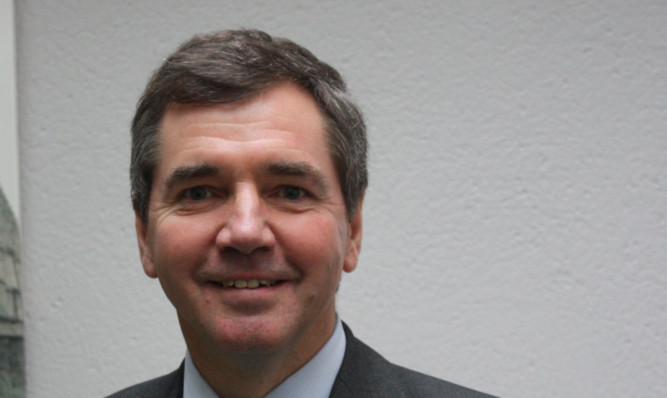The prediction is that Scottish farm land prices will rise by 8% this year for top quality land and 4% for lower grades, but the supply of farms for sale looks likely to remain low.
Speaking to agricultural journalists in Edinburgh, Savills director Charles Dudgeon said the market is now in “unheralded territory”.
He added: “Long-term supply is the key issue.
“Put simply, there is too much money chasing too few acres.
“The available land in 2014 was 28% less than in 2013. It is also, at 32,500 acres, far less than the 115,000 acres offered for sale in 2000.
“To put even that in context in the years following the end of World War Two there could be 600,000 acres changing hands annually.”
CAP reforms over the years have habitually stifled activity in the land market but it is much more marked this time.
Normally the market would quieten down for a year, but this time there has been so much uncertainty it looks like the effect will last for four years altogether.
The message now is that entitlements can be transferred with the farmland and that will help.
Prices are high, but Mr Dudgeon urged some caution.
Although there was plenty of talk of farms changing hands at £12,000 or £14,000 per acre, these were for very good farms in the small areas of Scotland classified as grade one, grade two or the better parts of grade three.
“Really we are speaking about a handful of farms and it would be misleading to think that was where the market was.
“I would put prime arable at £7,500 to perhaps just over £10,000 per acre, with secondary arable from £5,000 to £7,500 per acre,” Mr Dudgeon said.
He put ploughable pasture at £3,500 to £5,000 per acre, and permanent pasture at £2,500 to £3,500 per acre.
Moving up the hills he valued upland pasture at £800 to £1,500 per acre, plantable hill at £500 to £700 per acre, and out-and-out hill at £150 to £300 per acre.
There was, however, a growing disconnect between the price of land and its agricultural productivity.
There had, in fact, been very few periods when the price of land was such that it could be justified by a return on growing a crop of cereals.
Apart from brief periods in the mid to late 1980s, land prices had kept well ahead of agricultural commodities.
Since 2005 the gap had become markedly larger until now there was very little connection.
The driver was simply the scarcity coupled with the investment value.
Purchasers were taking a long-term view, say over 50 years, and seeing it as a safe haven.
“If £10,000 or £12,000 per acre causes a stir in Scotland it needs £15,000 per acre to cause the ‘wow’ factor in England,” said Mr Dudgeon.
The best land in Hampshire and East Anglia was fetching that sort of money, and vacuum cleaner tycoon James Dyson had purchased 20,000 acres in the last few years.
The Wellcome Trust had also looked on farmland as a favoured investment and bought the entire Co-operative Farms portfolio.
Again there was a warning, however of the 133 farms offered publicly for sale in Scotland in 2014, some 46% had remained unsold after 12 months.
“There is more preparation needed than ever, both on-farm and from the agent before farms are brought to the market.
“If there are any flaws in the farm these need to be reflected in the asking price from the start,” noted Mr Dudgeon.
The market in estates had also been constrained, partly due to political uncertainty.
From 2010 to 2013 around 20 estates had changed hands each year, but in 2014 this dropped to only nine.
The interest had been massive, with 135 viewers for one 1,200-acre estate in Inverness-shire, and another in the same county attracting viewers from 10 countries including Greece, Ukraine, the Middle East and England.
